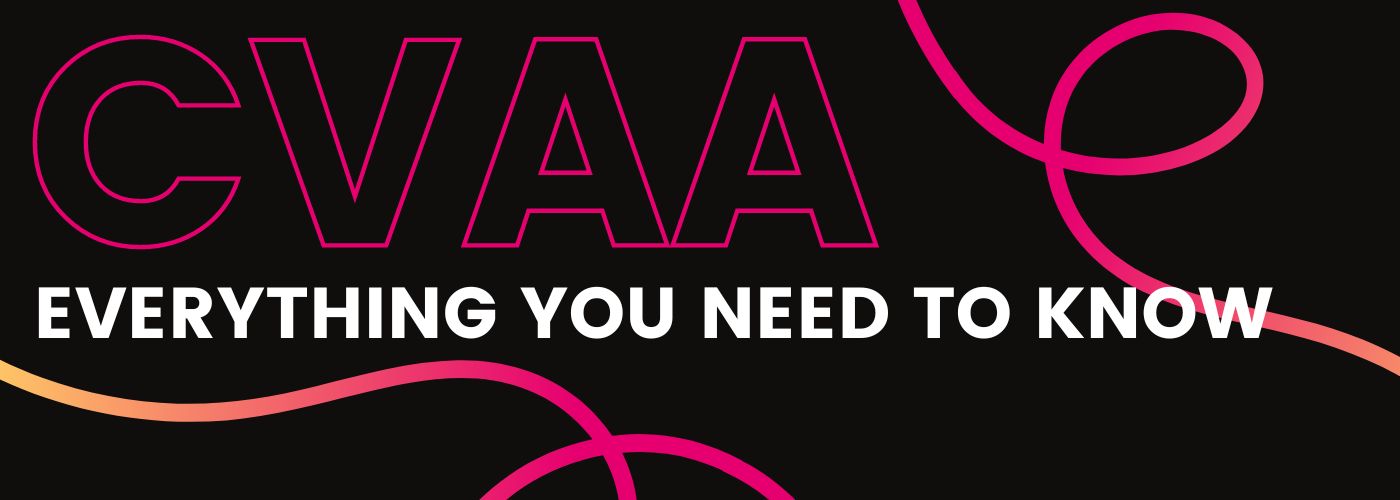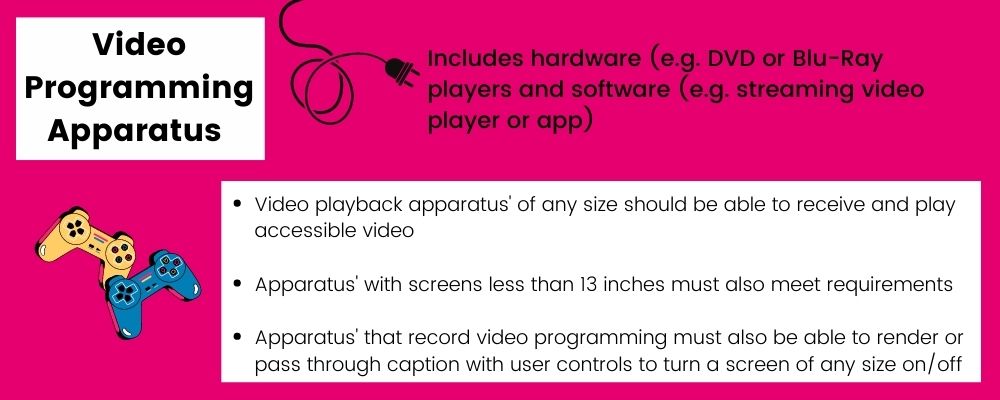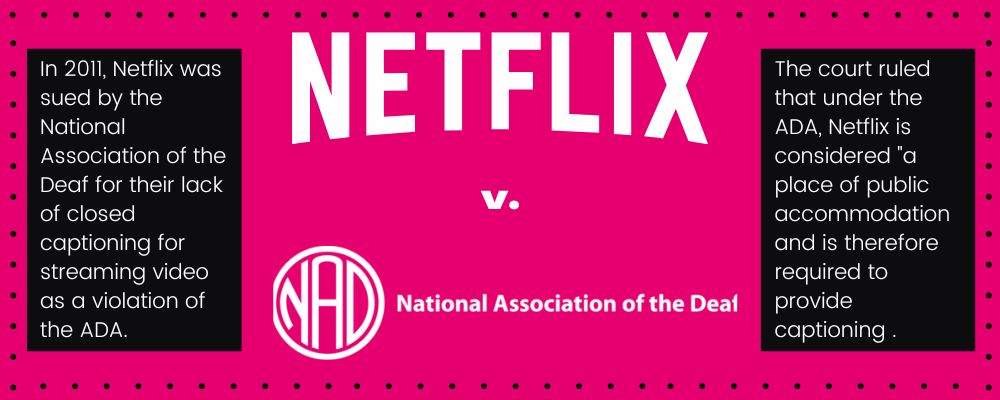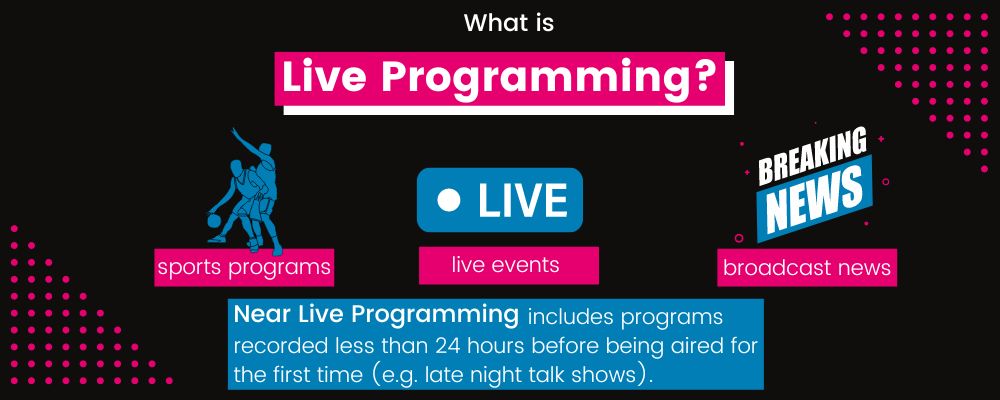Everything You Need to Know About CVAA Guidelines and Compliance
Updated: December 13, 2022
CVAA Online Video Captioning Requirements and Deadlines [Free eBook]
As a response to the proliferation of digital technologies and online video, the CVAA was created to ensure people with disabilities also have equal access.
What Is the CVAA?
The 21st Century Communications and Video Accessibility Act (CVAA) is designed to ensure emerging technologies and communication channels are accessible to people with disabilities.
The CVAA was signed by Obama in 2010 -and if enforced by the FCC – to set clear rules for internet video programming.
The CVAA is split into two titles:
- Title I – Communications Access
- Title II – Video Programming
Title I sets accessibility requirements for products and services that use the internet. Title II outlines captioning and description requirements for online video.
Who does the CVAA Apply To?
Do you publish content that was previously aired on television online?
If yes, then you must abide by the CVAA.
Online video captioning requirements apply to both video creators and content distributors.
- Video programmers are responsible for ensuring compliance with FCC caption quality requirements
- Video programmers are responsible for providing closed captioning on all non-exempt programming
- Vide Programming Distributors (VPDs) are responsible for passing through captions
- VPDs are responsible for ensuring maintenance and delivery of captions
Video programmers are also responsible for providing annual certifications to the FCC attesting to:
- Their compliance with FCC captioning rules
- Following best practices for captioning compliance
- If they are exempt from closed captioning requirements
They must also provide the FCC with contact information for the individuals responsible for captioning compliance.
VPDs are no longer required to obtain certifications from video programmers about captioning compliance. However, they must conduct annual investigations into captioning complaints and respond accordingly.
Video programmers must then address any complaints associated with caption creation, quality, or delivery to VPD.
Dissecting the CVAA: Title I – Communications Access
Title I covers both traditional and digital communication technologies, which were not previously covered by the FCC.
The title “requires advanced communications services and products to be accessible by people with disabilities.” These services include:
- Interconnected voice over internet protocol (VoIP) service: technology that uses internet protocol instead of analog systems.
- Non-interconnected VoIP service: a communication device that is not connected to a phone network – like an Xbox Live.
- Electronic messaging service: the creation, storage, exchange, and management of text, images, voice, telex, fax, e-mail, paging, and Electronic Data Interchange (EDI) over a communications network.
- Interoperable video conferencing service: when two video conferencing systems are connected together.
Essentially, providers of Advanced Communications Services should make their products and services accessible to people with disabilities, including people who are deaf, hard of hearing, blind, and low vision.
Furthermore, the Title established record-keeping requirements to ensure that communication companies are consulting with individuals with disabilities throughout the product development process.
CVAA Online Video Captioning Requirements and Deadlines: Free eBook
Dissecting the CVAA: Title II – Video Programming
Title II of the CVAA increases the accessibility of video programming. Specifically, it establishes closed captioning requirements for online video and audio description for television programming.
Title II on Closed Captioning
Title II states that video programming that is closed captioned on TV must also be closed captioned when published on the internet.
However, any programming that has only been shown on the internet, does not need to be closed captioned.
So how does this requirement apply to streaming services that create internet-only video content (e.g. Netflix Originals)?
The CVAA does not require captioning for Internet-only video content. However, this type of content could be covered under the Americans with Disabilities Act.
Consumer-generated content (like a vlog on YouTube or a homemade movie) is also not covered by the CVAA. Nor are PEG channels.
As of July 1, 2017, all video programming owners and video programming distributors must meet the following regulations for captioning:
- All pre-recorded video programming shown on television with captions must have captions when published online.
- Live and near-live programs shown on TV with captions must have captions when republished online.
- Video clips and montages of any length, edited or unedited, that aired on TV must be captioned when published online. For clips of live programming, captions must be up within 12-hours. For clips of near-live programming, captions must be up within 8-hours.
- CEA-708 user controls for captions (font, size, color) must be available to the consumer.
In addition, devices that are capable of playing video should also be able to play captions, including devices with screens smaller than 13″.
The recommended caption format adopted by the FCC is the SMPTE-TT (Society of Motion Picture and Television Engineers Timed Text) caption format.
Title II on Audio Description
Title II also establishes audio description requirements for television programming.
Audio description describes the important visual content in a video for blind or low vision viewers, typically within the natural pauses of the audio.
Audio description is required for any “commercial broadcast television station is affiliated with ABC, CBS, Fox or NBC and is in the top 60 television markets and multichannel video programming distributor systems with 50,000+ subscribers.” As of July 1, 2018, they must describe “87.5 hours per calendar quarter of video described prime time or children’s programming.”
The top five non-broadcast networks (USA, TNT, TBS, History, and Disney Channel) must also provide 87.5 hours of audio description as of July 1, 2018.
Note: the audio description requirements used to be 50 hours but was increased to 87.5 hours through this Report and Order.
By 2020, the FCC will be able to phase-in audio description requirements every year for an additional 10 television markets.
Caption Quality
The FCC has clear standards for caption quality. Caption quality is assessed based on: accuracy, timing, completeness, and placement.
Accuracy
The FCC defines accuracy as “captions must match the spoken words in the dialogue, in their original language (English or Spanish), to the fullest extent possible and include full lyrics when provided on the audio track.”
CVAA compliant captions must have proper spelling, punctuation, and capitalization. They shouldn’t paraphrase and they should include the important non-speech elements of the audio.
The goal is for the captions to convey the tone of the speaker’s voice and the intent of the content.
Timing
Captions must be synchronous; they must “coincide with their corresponding spoken
words and sounds to the greatest extent possible.”
Captions must also be provided at a readable speed.
Completeness
According to the FCC, “captions must be complete, captions must run from the beginning to the end of the program, to the fullest extent possible.”
Placement
As the FCC states, “captions should not block other important visual content on the screen including, but not limited to, character faces, featured text (e.g., weather or other news updates, graphics and credits), and other information that is essential to understanding a program’s content when the closed captioning feature is activated.”
User Controls
To be in compliance with the CVAA, users should be able to customize the format of the closed captions. They must have controls to adjust font size, style, color, opacity, background, language, and preview.
This blog was originally published on August 15, 2018 and has since been updated for accuracy, clarity, and freshness.

Subscribe to the Blog Digest
Sign up to receive our blog digest and other information on this topic. You can unsubscribe anytime.
By subscribing you agree to our privacy policy.







